
Start your career as a 2D animator for film, TV and games! CG Spectrum’s offers specialized online career training and mentorship from expert animators working at top studios. Get access to career services and a supportive community. Learn more.
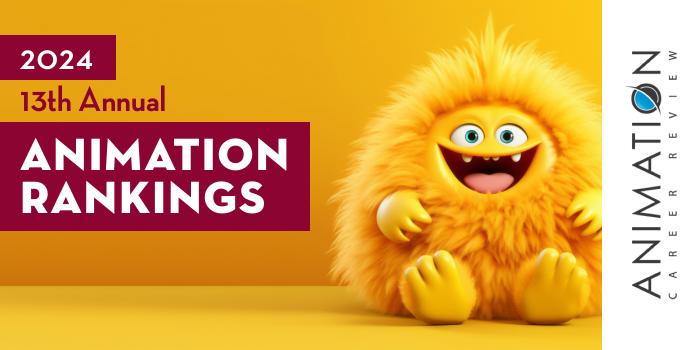
| Ranking | School | State |
|---|---|---|
| 1 | School of Visual Arts | New York |
| 2 | Rhode Island School of Design | Rhode Island |
| 3 | Pratt Institute | New York |
| 4 | New York University | New York |
| 5 | Rochester Institute of Technology | New York |
| 6 | Carnegie Mellon University | Pennsylvania |
| 7 | Massachusetts College of Art and Design | Massachusetts |
| 8 | Maryland Institute College of Art | Maryland |
| 9 | The New School's Parsons School of Design | New York |
| 10 | University of the Arts | Pennsylvania |
| 11 | Drexel University | Pennsylvania |
| 12 | University of Pennsylvania | Pennsylvania |
| 13 | Northeastern University | Massachusetts |
| 14 | Syracuse University | New York |
| 15 | Virginia Commonwealth University | Virginia |
| 16 | Harvard University | Massachusetts |
| 17 | Rensselaer Polytechnic Institute | New York |
| 18 | University of Maryland Baltimore County | Maryland |
| 19 | Pennsylvania Western University, Edinboro | Pennsylvania |
| 20 | Emerson College | Massachusetts |
| 21 | Rutgers University Camden | New Jersey |
| 22 | New York Institute of Technology | New York |
| 23 | Dartmouth College | New Hampshire |
| 24 | Virginia Polytechnic Institute and State University | Virginia |
| 25 | New Jersey Institute of Technology | New Jersey |
Our 2024 list -our thirteenth annual- of the Top 25 Animation School Programs on the East Coast. For an explanation of our ranking criteria, click here.
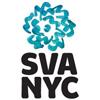
The Animation Department at School of Visual Arts (SVA) has three undergraduate pathways for students who would like to train for a career in animation. Options include Animation, Computer Art, and Computer Animation and Visual Effects. Leading to a BFA, all programs emphasize hands-on experience; working relationships with independent animators across New York and alumni-owned Augenblick Studios, Plymptoons, and Titmouse; and mentors who are accomplished special effects artists, directors, and character designers.
Students in all BFA programs train on the latest industry software including Toon Boom Harmony, Adobe Animate, Storyboard Pro, Maya, and After Effects. SVA Animation students also participate in the School of Visual Arts Thesis Celebration, where they have the opportunity to present their best work to industry professionals and other celebrated figures in the world of art.
Graduates of the Animation, Computer Art, and Computer Animation and Visual Effects BFA programs at SVA have gone on to win awards presented by the Association of International Film Animators (ASIFA), the Academy of Motion Pictures, and The International Animation Festival. Graduates have also won awards for their short and feature films at numerous festivals around the world.
SVA Animation alumni can be found at independent animation studios worldwide and at major studios such as DreamWorks, Nickelodeon, Sony Pictures Animation, Lucasfilm Animation, Disney Animation Studios, and Warner Bros. Animation.
For animation students seeking an advanced degree, School of Visual Arts has an interdisciplinary Computer Arts MFA program with several in-demand concentration areas. The Computer Arts Department at SVA was established in 1986 as the first MFA program in the nation to focus in computer arts. With a network of more than 1,200 alumni, the MFA program features workshops; visiting artists; guest lectures in all areas of animation, experimental art, and motion graphics; and internship opportunities.
Concentration areas for this 60 credit hour program include 2D Animation, 3D Animation & VFX, and Experimental Art. Across options, students will take courses such as Animation Culture; Character Animation; Advanced Modeling and Rigging Concepts; Digital 2D Animation: Tight Tie Downs; Motion Graphics I-II; Emerging Practices: Nonlinear Storytelling; Virtual Reality Storytelling; and Creative Programming for Artists I-II.
During their studies, MFA Computer Art students have been nominated for 13 Student Academy Awards, and won nine. They have also won awards at international competitions such as ISEA; Prix Ars Electronica; the Leonardo Awards for Excellence; SIGGRAPH; Electronic Theater and Art Show; Adobe Design Achievement Awards; and the YouTube Awards. Student works have also appeared at New York Film Festival and international film festivals such as Cannes, Tribeca, Sundance, Annecy, and Ottawa.
The Computer Art MFA program at SVA culminates with the Thesis, which students will complete across four courses. These include Thesis Research and Writing I & II; and Thesis I & II.
Graduates of the Computer Arts MFA program at School of Visual Arts have won several Academy, Emmy, and Grammy Awards. Program alumni have also been hired at major studios such as Industrial Light & Magic (ILM), MTV, Pixar, Google, Adobe, Sony Pictures Imageworks, Electronic Arts (EA), Disney, and DreamWorks. Some alumni have gone on to launch their own studios and freelance businesses.
School of Visual Arts opened in 1947 as the Cartoonists and Illustrators school. Classes began with just three teachers and 35 students. Today, SVA serves approximately 3,440 students enrolled in dozens of BFA, MA, MFA, and MPS programs. School of Visual Arts is accredited by the Middle States Commission on Higher Education (MSCHE), with individual program accreditation by the National Association of Schools of Art and Design (NASAD) and the Council for Interior Design Accreditation (CIDA).
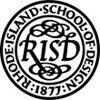
Rhode Island School of Design (RISD) is home to the Film/Animation/Video (FAV) Department, which serves 150 students. Leading to a BFA, the FAV program combines animation, live-action, and open media. Students have the option to specialize in any of the three areas. Regardless of specialization, all students are required to take first year studios in Experimental and Foundation Studies (EFS). Students will also take courses in Liberal Arts to supplement studio studies.
Course examples for the RISD FAV BFA include Animation Practices; Time, Light, Sound; Intermediate Studio: Animation; Digital Practices; Intermediate Studio: Live Action; and Senior Studio: Animation.
All RISD FAV students have access to state of the art facilities and equipment such as production studios puppet animation, film, video, 16mm, and 35mm; Macintosh and CGI workstations equipped with a variety of professional editing and production software; and sound mixing and digital editing rooms. Collaborative study, workshops, and a professional internship are also part of the program.
During the senior year of the FAV BFA program at Rhode Island School of Design, students will develop, design, animate, direct, and produce an independent project. Throughout this final year, students will receive critiques and individual guidance weekly from established professionals in the world of animation. Class meetings are devoted to specialized technical workshops, film screenings, and group critique.
The year culminates with the RISD Senior Festival. Held in May, this public event allows students to network and put their final animated or live action films on the map. Graduates will leave the FAV BFA program with a professional reel and portfolio.
Graduates of FAV BFA program at the Rhode Island School of Design have gone on to create, direct and/or produce a number of animated films and series such as the Oscar-nominated animated short Feral (Daniel Sousa, Animator and Director), Family Guy (Seth Macfarlane, Creator), and The Simpsons (Lance Wilder, Animator). RISD graduates have also been hired at major studios such as Pixar, DreamWorks, HBO, Fox, and PBS. Some RISD FAV alumni have launched their own studios and production companies.
Founded in 1877 as both a school and a museum, Rhode Island School of Design is one of the first independent colleges of art and design in the U.S. This private, nonprofit college serves 2,620 students enrolled in 44 full-time bachelor’s and master’s degree programs. RISD is accredited by the New England Commission of Higher Education (NECHE) and the National Council for State Authorization Reciprocity Agreements (NC-SARA). The Architecture, Landscape Architecture, and MA in Teaching programs have special accreditation by the National Architecture Accrediting Board, Landscape Architectural Accreditation Board, and the RI Department of Education, respectively.

Pratt Institute (Pratt) is home to the School of Art, which houses eight departments and more than 30 degree programs. The Department of Digital Arts here houses several animation programs. The BFA and MFA options provide the opportunity to concentrate in 3D Animation and Motion Arts. The BFA program also has a 2D Animation concentration.
Across programs, features include small class sizes with courses taught by industry professionals; a collaborative environment; access to state-of-the art studios and facilities; and the opportunity to create a final professional portfolio or reel.
Pratt BFA students will take courses such as Time and Movement; History of Animation; 3D Animation Studio; Compositing and Special Effects; Audio for Digital Media; Animation Narrative; Video Editing; 2D Animation Studio; Screenwriting; and Professional Practices. BFA students will complete a 2D or 3D Animation Senior Project across several classes. This culminating experience results polished portfolio quality piece.
In the Digital Arts MFA program at Pratt Institute, students will create narrative films, installations, and non-narrative films using 2D and 3D digital animation techniques, motion graphics, and live action. This one-year, 60 credit hour program consists of courses such as 3D Animation: Expressive Motion; 3D Character Modeling and Rigging; 3D Lighting and Rendering; Graduate Animation Seminar I-II; and 3D Animation Studio: Performance & Acting.
The MFA program culminates with the Thesis (time-based project), completed across three courses: Thesis I, Post Production, and Thesis II. Students will use a mix of animation, video audio, rendering and compositing tools to complete their final projects.
Graduates of the Digital Arts programs at Pratt Institute are prepared to pursue positions across a variety of creative industries. MFA alumni have been hired at places such as Sony Pictures Imageworks, Walt Disney Animation Studios, NBCUniversal, Inc., Industrial Light and Magic (ILM), Augenblick, Cartoon Network, Gameloft, DreamWorks, Curious Pictures, Framestore, Digital Domain, Buzzfeed, Titmouse, and Thrillist.
MFA alumni have also gone on to establish academic careers at institutions such as University of Florida (UF), Digital Worlds Institute, New York University (NYU), Rochester Institute of Technology (RIT), New York Institute of Technology (NYIT), Howard University, and National Taiwan Normal University (NTNU).
Founded in 1887, Pratt Institute was one of the nation’s first colleges to welcome students without regard to color, gender, or class. The school serves approximately 5,050 students across campuses in Brooklyn, Manhattan, and Utica, New York. More than 70 degree programs are offered across six schools and The Center for Interdisciplinary Studies. Pratt Institute is accredited by the Middle States Commission on Higher Education (MSCHE).
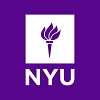
New York University (NYU) is home to Tisch School of the Arts (Tisch). Founded in 1965, Tisch serves more than 4,000 students from 46 states and 58 countries. Programs at Tisch are provided at all degree levels through the Maurice Kanbar Institute of Film & Television; the Institute of Emerging Media; and the Institute of Performing Arts.
Producing more than 5,000 films per year, Kanbar houses the Department of Animation and Digital Arts—home to the Film and Television BFA. Within the BFA program is an Animation Area. Launched in 1980 with just five classes and 80 students, the Animation Area was the first program to bring digital technology to Kanbar. Today, the Animation Area provides nearly twenty different courses to more than 500 students from nearly every state and dozens of countries.
The Animation Area at NYU Tisch provides instruction in 2D, 3D, and Traditional Animation. The program begins with animation fundamentals and progresses to intermediate animation, then advanced. Course examples include Experimental Animation; Drawing and Design for Animation; Stop Motion Animation; Visual Effects for Compositing; Special Topics in 3D Animation; Advanced Animation Production; Action Analysis I-II; Writing for Animation; and Animation: From Pitching to Pipeline to Production.
In addition to providing in-demand courses and access to state-of-the-art facilities and equipment, the Animation Area at NYU Tisch features guest speakers such as Jeffrey Katzenberg, David Polonski, and Chris Butler, along with access to numerous study abroad and internship opportunities.
Graduates of the Animation Area at New York University’s Tisch School of the Arts are prepared to pursue positions at studios across the U.S. and abroad. Some program alumni go on to launch their own studios and freelance businesses. Others have been hired at major studios such as Pixar, DreamWorks, and Walt Disney Animation.
New York University is the largest private university in the U.S. Founded in 1831, the school serves more than 55,000 students across degree-granting campuses in New York, Abu Dhabi, and Shanghai. NYU also operates 12 global academic centers and research programs in more than 25 countries. With more than 19,000 employees, New York University is also one of the largest employers in New York City. These professionals help administer an estimated 400+ programs. NYU is accredited by the Middle States Commission on Higher Education (MSCHE).

Rochester Institute of Technology (RIT) is home to the College of Art and Design, which houses the School of Film and Animation. A designated Center of Excellence (COE) by Toon Boon Animation, the School provides many opportunities for students to gain hands on experience and network—all before graduation.
For starters, RIT School of Film and Animation students may participate in RIT’s Study Away: LA Program. Students that choose to participate in the program will spend a semester in Los Angeles where they can intern at top studios and entertainment companies, and take two courses to complement the study-away experience.
RIT also houses the fourth-oldest and one of the largest cooperative (co-op) education programs in the world. All RIT programs provide co-op education opportunities as well as internships and other experiential learning experiences. RIT animation students also have access to 52,000 square foot MAGIC Spell Studios, and labs and classrooms outfitted with industry standard technology and software.
At all levels, animation students will participate in the RIT’s Creative Industry Day, where they will have the opportunity to mingle with representatives of studios, design firms, and other creative companies.
The School of Film and Animation at RIT also houses the Animation Program. Several degree options are available. At the undergraduate level, the school has a stand-alone Film and Animation BFA that focuses on production, screenwriting, 2D and 3D animation, and stop motion animation; a BFA in Film and Animation with an Animation or Production Option; and a Motion Picture BS that combines engineering and the arts with animation production, feature film, and television.
At the graduate level, RIT’s School of Film and Animation has a Film and Animation MFA with four options including 2D Animation, 3D Animation, Production, and Screenwriting. Students in this program have 24/7 access to a dedicated graduate lab with industry-level software; and opportunities to gain career experience as a faculty research assistant, graduate assistant, or other position.
Across all School of Film and Animation programs students have access to state-of-the-art facilities and equipment such as MAGIC Spell Studios; Stop Motion Studios; Animation 2D and 3D Labs; Soundstages; Animation and Drawing Studios; Virtual Reality Labs; Editing Suites; a Mixdown Room; Post-Production Labs; SOFA Cage; and the Pro Tools Editing Suite.
All programs (graduate and undergraduate) culminate with a finished film completed across several Capstone or Thesis courses. Students will then take part in a public screening of their finished work.
Graduates of Rochester Institute of Technology enjoy an impressive 92% employment rate. School of Film and Animation alumni are prepared to pursue careers across the creative, technical, medical, architecture, and legal industries. Examples of companies and studios that have hired RIT Animation graduates include Industrial Light & Magic (ILM), Disney Animation Studios, Lucasfilm, Electronic Arts (EA), Dolby, DreamWorks, Nickelodeon, and Sony.
Rochester Institute of Technology was founded in 1829 as the Rochester Athenaeum. With global campuses in China, Croatia, Dubai, and Kosovo, this research university serves more than 20,000 students, making it one of the largest private universities in the U.S. RIT provides 200+ academic programs across 10 colleges and institutes, and the School of Individualized Study. Rochester Institute of Technology is accredited by the Middle States Commission on Higher Education (MSCHE).
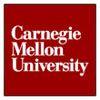
Carnegie Mellon University’s (CMU) is home to the Integrative Design, Arts and Technology Network (IDeATe). In collaboration with Robotics Institute (est. 1979) in the School of Computer Sciences, the IDeATe network manages 10 undergraduate minors, including Animation & Special Effects.
Consisting of a minimum of 27 units, the Animation & Special Effects minor allows students to gain experience in areas such as digital 2D and 3D animation techniques; visual effects and procedural animation; real-time animation systems; expanded and experimental animation methods; and storytelling through animation. Project-based courses for the program are led by faculty with expertise in Art and Robotics.
Course examples include Technical Character Animation; Topics in Animation: Story Development; Advanced ETB: Animation Studio; IDeATe Special Topics in Animation: Bipedal Rigging for Animation Production; and Introduction to 3D Animation Pipeline.
The IDeATe Animation & Special Effects courses are open to all students. This provides opportunities for animation minors to collaborate with students from game design, film, digital media, and more.
For students seeking a four-year undergraduate degree, the College of Fine Art (CFA) at Carnegie Mellon University has an interdisciplinary BFA in Electronic & Time-Based Media (BFA ETB) that explores areas such as animation, computational and interactive arts, game arts, and video and performance. Students in this program will take advanced courses such as Animation, Art, and Technology; Experimental Game Design; Digital Storytelling and Resistance; and Digital Storytelling and Resistance.
Graduates of the ETB and Animation & Special Effects programs at Carnegie Mellon University are prepared to pursue positions at major studios, networks, and gaming companies. Program alumni have been hired at places such as DreamWorks Animation, Electronic Arts (EA), MTV, Paramount, Blizzard Entertainment, Sony Interactive Entertainment, Walt Disney Studios, Warner Interactive, Zynga Games, and Comedy Central.
Founded on November 15, 1900 by industrialist and philanthropist Andrew Carnegie, Carnegie Mellon University opened its doors as Carnegie Technical Schools. Today, this private global research university provides more than 200 programs to approximately 16,780 students from 126 countries. In addition to the main campus in Pennsylvania, CMU has campuses in California's Silicon Valley and Doha, Qatar. Housed across seven colleges and schools, Carnegie’s academic programs are also provided in Africa, Asia, Australia, Europe, Mexico, and Portugal. Carnegie Mellon University is accredited by the Middle States Commission on Higher Education (MSCHE).

Massachusetts College of Art and Design (MassArt) has an Animation BFA program that emphasizes experimentation, collaboration, studio-based learning. Housed in the Animation Department, the program takes place across 20 state-of-the-art classrooms, studios, and labs dedicated to animation.
The BFA begins with the foundation year, which consists of courses such as Thinking, Making, Writing: Using Words with Clarity and Flair; Time; Studio for Drawing; Form Study; Visual Language; and Drawing Projects.
During the second year of the program, students are introduced to animation basics, experimental animation, and digital 2D animation. Color & media, figure, liberal arts, and history of art courses are also explored during the second year. Course examples include Figurative Clay Construction; Design for Animators; Media Techniques; Animation 1: Basics; Color for Painting; Animation 2: Experiments; Introduction to Digital 2D Animation; Life Drawing; and Human Figure in Illustration.
In the final years of the Animation BFA program at MassArt, students will focus primarily on studio electives such as Puppet Animation & Fabrication; Sound Design for Animators; and 3DCG Character Animation, along with advanced coursework such as Animation 3: Communication, and Animation 4: Production. Students will also complete an animation portfolio and the final animation project, while finishing any liberal arts and art history coursework. In addition, a professional internship may be completed during this time.
Graduates of the Animation BFA program at Massachusetts College of Art and Design are prepared to pursue a wide range of positions in industries such as film and animation, digital art, advertising and marketing, and design. Program alumni are also prepared to launch their own studios or freelance careers. MassArt alumni hold titles such as Director, Cartoonist, Designer, Composer, Visual Artist, Art Educator/Professor, Comic Book Creator, Illustrator, Painter, Producer, and Screenwriter.
Massachusetts College of Art and Design is the nation’s first and only public college of art and design. Founded in 1873, the school serves approximately 1,785 students enrolled more than 40 degree, minor, and certificate programs. Approximately 155 continuing education students are enrolled in over 100 classes and workshops in all areas of art and design. Massachusetts College of Art and Design is accredited by the New England Commission of Higher Education (NECHE). The school is also an accredited institutional member of the National Association of Schools of Art and Design (NASAD).
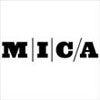
Maryland Institute College of Art (MICA) requires all undergraduate students to complete the school’s innovative First Year Experience (FYE). During this exploratory year, students will study contemporary art and design practice; collaborate; and participate in constructive critiques. The rigorous FYE curriculum also highlights skill-building, technology, and 2D, 3D, and 4D media. Upon completion of the MICA FYE, students will move on to their chosen major.
Students who choose the Animation major will be admitted to the Animation Department at MICA. Leading to a BFA, the Animation program requires 24 credit hours of study in the major. Course examples include Otherworldly; Stop-Motion Puppet Rubbish; Astro-Animation; Animation Digital Fabrication; Animation in Unique Spaces; Advanced 3D Open Studio; Experimental Animation; 3D Computer Animation; Storyboarding for Animation; Digital tools for Animation; and Character Conflict Performance; Special Topics in Animation; and Professional Practice for Animators.
BFA students will also complete several projects, plus the Animation Senior Thesis I and II courses. The Senior Thesis is a year-long capstone that culminates in a final film, installation, or interactive media project. Final projects are presented at the MICA Grad Show.
For students in a different major who would like to study Animation, Maryland Institute College of Art has an Animation (studio) minor. This 18 credit hour program requires Introduction to 2D Animation, and Electronic Media and Culture. For the remaining courses, students must select options from animation and studio electives.
Maryland Institute College of Art graduates are prepared for creative careers in a wide range of industries. MICA alumni are Google Animators, Mobile App Developers, Comic Artists, Filmmakers, and more. They have been hired at major studios such as MTV, DreamWorks, Disney, and LAIKA Studios. Many MICA graduates go on to pursue graduate study, launch their own studios, or establish a freelance business.
Founded in 1826, Maryland Institute College of Art is the nation’s oldest independent, continuously degree-granting college of art and design. The school serves nearly 3,500 students from 49 states and 52 countries. Programs at MICA lead to a BFA, MA, MFA, MBA, MPS degree, or post-baccalaureate certificate. Maryland Institute College of Art is accredited by the Middle States Commission on Higher Education (MSCHE) and the National Association of Schools of Art and Design (NASAD).

In the 20th century, The New School became famous for housing courses in the creative arts taught by artists such as Frank Lloyd Wright, Martha Graham, W. H. Auden. In 1926, The New School was also the first American university to teach the history of film, and one of the first to offer college-level courses in photography and jazz. Today, The New School is the only university to house a design school, liberal arts college, performing arts college, and graduate programs and colleges under one roof.
Serving 5,755 students, design is the largest college at The New School. Known as Parsons School of Design, the school also houses a Design and Technology program that has both BFA and MFA pathways.
The STEM-designated BFA program focuses on interaction, storytelling, and emerging art and design practices. Specializations include Creative Technology and Game Design. Course examples for this the 120 credit hour program include Drawing/Imaging; Space/Materiality; Integrative Studio; Time’ Design Studies; Core Studio Environments; Objects as History; and Integrative Studio.
All New School undergraduates must also complete the first-year experience. Consisting of 30 credits, the experience includes seminars and studios; liberal arts studies; and the exploration of 2D and 3D processes, drawing, digital design, and more. The Design and Technology BFA culminates with a thesis project, completed across two courses worth a total of 12 credits.
The Design and Technology MFA at Parsons School of Design is a STEM-designated, studio-based degree that requires on-campus study. Consisting of 60 credit hours, the MFA features courses and studios such as xFab Lecture and Lab; Major Studio; Creative Practice Seminar; and Collaboration Studio. Other program features include opportunities to work on projects with external partners such as One Plus and The Metropolitan Museum of Art (The Met); and creative collaborations with students in other programs such as Transdisciplinary Design, Data Visualization, and Communication Design.
Both MFA and BFA students also have the opportunity to participate in the Parsons internship program and projects with external partners. Recent partners include Google, MIT, Panasonic, IBM, The New York Times, SXSW, Nokia, Intel, Samsung, and NYC Media Lab.
The Design and Technology MFA program at Parsons School of Design culminates with the Thesis Studio, completed across two courses and 12 credit hours.
The School of Continuing & Professional Education at The New School Parsons has an additional option for animators seeking a shorter program. Leading to a certificate, the Motion Design and Animation program consists of three courses that explore the production process from start to finish. Courses can be completed in one year, and include Storytelling with Motion Graphics and Animation; Motion Design 1 with After Effects; and Moton Design 2 with After Effects.
The Motion Design and Animation certificate is delivered entirely delivered online, and it can be taken alone or in combination with the Design and Technology BFA and MFA programs.
Students in all New School programs have the opportunity to interact with and work on projects with professionals at places such as Apple, Siemens, Nickelodeon, the Metropolitan Museum of Art, gameLab, MTV, Rockwell Interaction Lab, Atari, UNESCO, OnePlus Technology, and Eyebeam Art & Technology Center.
Graduates of the BFA, MFA, and certificate programs at Parsons School of Design are prepared to pursue positions in areas such as animation, 2D and 3D animation, game design, advertising, VR/AR, motion graphics, immersion experience design, digital filmmaking, graphic arts, interaction design, television production, mobile and application design, web design, software design, and media art.
The New School was founded in 1919 as the New School for Social Research. Serving approximately 10,815 students, the school provides more than 120 degree and diploma programs across six colleges and schools, including Parsons Paris. The New School is accredited by the Middle States Commission on Higher Education (MSCHE).

The School of Film at University of the Arts (UArts) has three paths to study animation. Options include the Animation BFA, a BFA in Film & Animation, and an Animation minor. The School of Film encourages collaboration between schools, so all students have opportunities to study design, photography, acting, and other disciplines.
The Animation BFA allows students to focus in 2D, 3D, or Stop Motion Animation. Students may also create a hybrid focus path. The Film & Animation BFA explores styles and genres across animation and filmmaking. Examples include experimental, computer-generated animation, documentary, traditional animation, stop motion, and narrative. Across programs, students have opportunities to work with professionals and faculty associated with major studios and networks such as Nickelodeon, HBO, Comedy Central, Netflix, IFC, Disney Animation Studios, and Cartoon Network.
The BFA curriculum combines hands-on teaching with internships at studios such as Augenblick, Stretch Films Inc., and Sesame Workshop; study away experiences in places such as France and South Korea; and formal critiquing sessions designed to evaluate the students’ progress and work. BFA students also have opportunities to interact with guest speakers and alumni; collaborate on projects with peers; and participate in lectures and screenings.
A major component of the Animation programs at University of the Arts is the Professional Practices requirement. During this multifaceted course, which takes place in the third year of the programs, provides the opportunity for students to post their reels to their branded portfolio websites; participate in mock interviews; design business cards, resumes, and other materials; and develop social media strategies.
The Animation programs at UArts also provide access to a 5,600-square-foot space known as the Center for Immersive Media (CIM). Within the CIM, students can explore other areas such as human-computer interaction (HCI), VR/AR, and performance motion-capture. In addition to CIM, animation students have unlimited access to computer labs and state-of-the-art animation, film, and stop-motion studios.
The Animation and Film BFA at UArts culminates with the Animation Thesis or Film Thesis completed across two courses. The culminating experience for the Animation BFA is the Animation Thesis, completed across two courses. For Animation BFA students who would like to complete an additional project, the program provides the option to complete the Client Animation Project course instead of an internship.
University of the Arts Animation graduates are prepared to pursue roles such as Character Animator, Storyboard Artist, Effects Animator, Computer Animator, Art Director, Cinematographer, Clay/Puppet Animator, Director, Motion Graphics Designer, Producer, Animatic Editor, Scientific Animator, Forensic Animator, and Background Artist.
UArts graduates have been hired local companies and studios such as Center City Film & Video, Alkemy X, and unPOP. UArts alumni also work at major companies, studios, and networks such as Sony Interactive Entertainment, HBO, Warner Bros., DreamWorks, Netflix, Cartoon Network, Google, Walt Disney Animation Studios, Nickelodeon, Google, Augenblick, Titmouse, and Bento Box Entertainment.
Founded in 1876 as part of the Philadelphia Museum of Art, University of the Arts serves approximately 1,315 students enrolled in more than 40 degree programs in fine arts, design, media arts, dance, music, theater, and crafts. More than 20 minors are available and open to all students. UArts programs are offered in the Schools of Art, Dance, Design, Film, Music, Theater Arts, and Graduate and Professional Studies. University of the Arts is accredited by the Middle States Commission on Higher Education (MSCHE).

The Antoinette Westphal College of Media Arts & Design at Drexel University (Drexel) has several paths to study animation. Options include the Animation and Visual Effects (VFX) BS; Digital Media MS; Dual Animation and Visual Effects BS/Digital Media MS; Digital Media and Virtual Production BS/ Digital Media MS; and Digital Media PhD. An eight course (24-credit) Animation and VFX minor is also available.
The curriculum for this program provides a foundation in the design, storytelling, and technological skills used by 3D animators and VFX artists in the entertainment and design worlds. Minor students also have the opportunity for customize the program through 12 credit hours of electives. Lighting & Surfacing; Scripting for Animation and VFX; Digital Character Creation; and Technical Directing are just a few elective examples. The Animation and VFX minor can be taken alone or with just about any degree program within the College of Media Arts & Design.
The Dual BS/MS programs consist of coursework and projects in animation, 3-D modeling, gaming, advanced digital design, and interactivity. The programs also explore digital media history, theory, and methods. Dual BS/MS programs require a minimum of 232 credit hours to graduate.
The Animation & VFX BS program provides instruction and hands-on training in 3D modeling, character design, scripting and storytelling, motion capture, compositing, storyboarding, and rigging. The Digital Media MS at Drexel University is a two-year program that focuses on research and media applications. Areas explored include animation, advanced digital design, gaming and digital media history, 3D modeling, and interactivity.
Students in this program will complete several independent, industry-sponsored, student-created, or faculty-approved projects. Past projects have focused on animation design, advanced animation production techniques, narrative comics, and video games, among others.
The PhD is a research-driven degree that take place in an experiential learning environment. Besides entertainment, PhD students may conduct research in business, engineering, health, education, or other areas.
Drexel University has one of the nation’s top cooperative (co-op) education programs, so students in all degree programs have the opportunity to gain valuable hands-on experience prior to graduation. During the junior year, BS students will spend six months working full-time in the industry. Dual BS/MS students will participate in three co-op experiences in the second, third, and fourth years of study.
Positions may be paid or unpaid. Past co-op positions include animation, visual effects, technical direction, and 3D work at places such as Pixar, Cartoon Network, Sony Studios, FuseFX, and MediaKraft TV.
Graduates of the Animation & VFX and Digital Media programs at Drexel University have worked on projects such as Avengers: Infinity War, The Mandalorian, Ready Player One, and How to Train Your Dragon 2. Other program alumni go on to work in research and development in the fields of virtual reality, real-time rendering solutions, and generative design.
Drexel Animation & VFX and Digital Media graduates have also been hired by major companies and studios such as Pixar, Microsoft, XBOX, DreamWorks, Disney, and NCSoft Corp.
Drexel University was established in 1891 as Drexel Institute of Art, Science, & Industry. The school serves approximately 22,345 students enrolled in more than 200 degree programs across 15 colleges and schools. Drexel University is accredited by the Middle States Commission on Higher Education (MSCHE). The school’s academic programs in art, design, and media are accredited by the National Association of Schools of Art & Design (NASAD).

University of Pennsylvania (UPenn) is home to the Stuart Weitzman School of Design, which houses a variety of animation resources for students across all programs. Students have access to computer labs with Wacom tablets, and 2D and 3D animation and compositing applications such as Maya, Matchmover, After Effects, 3ds Max, Mudbox, Premiere, Flash, TV Paint, and many others. For stop-motion animation projects, the school has sound recording and editing equipment, DSLR cameras, and lighting and grip equipment to be used with Dragonframe software. A stop-motion and multiplane studio with a dedicate capture workstation as available as well.
Stuart Weitzman School of Design also houses the undergraduate program in Fine Arts and Design (FNAR) with an interdisciplinary major in FNAR. This Art BA program combines seminar courses with studio instruction, and the visiting artist lecture series. Coursework for the program allows students to study animation, digital design, 3D modeling, and more. Course examples include Design and Digital Culture; Mixed Media Animation; Advanced 3D Modeling; Cinema Production; Hand-Drawn Computer Animation; Digital Figure Modeling; Environmental Animation; 3D Computer Modeling; and Computer Animation.
Another path to study animation at UPenn is the Digital Media Design (DMD) program. Launched in 1998, DMD is part of the School of Engineering and Applied Science (SEAS). Leading to a Bachelor’s in Engineering and Science (BSE) with a DMD major, this interdisciplinary program allows students to study animation, games, virtual reality design, computer graphics, and interactive technologies. Course examples include Computer Animation, Drawing Investigations, Interactive Computer Graphics, Advanced Rendering, and 3D Computer Modeling.
The School of Engineering and Applied Science at University of Pennsylvania also houses the Center for Human Modeling and Simulation (HMS). Within the HMS Center is a Computer Graphics and Game Technology (CGGT) Engineering MS (MSE) program.
Established in 2004, this interdisciplinary program provides opportunities to specialize in Art and Animation, Animation and Simulation Technology; Creative Design; Production Management, or Human/Computer Interfaces. Students in this program have access to equipment and resources available through the SIG Center for Computer Graphics.
Course examples for the MSE include Computer Animation; 3D Computer Modeling; Physically-Based Animation; Interactive Computer Graphics; Physically-Based Rendering; Digital Figure Modeling; and Advanced Project Animation.
Students in the UPenn CGGT MSE program will spend their first year in the Master of Computer and Information Technology (MCIT) program. Upon completion, students may pursue the CGGT degree. Because they have taken a total of 16 courses, graduates will receive two degrees: the MCIT and MSE CGGT.
Graduates of UPenn’s MSE CGGT, DMD, and MCIT, programs are prepared to pursue careers and entrepreneurship in areas such as animation, design, directing, and game programming. Program alumni are routinely hired by major companies and studios such as Pixar, Microsoft, Walt Disney Animation, Activision Blizzard, Electronic Arts (EA), DreamWorks Animation, Sony, Industrial Light & Magic (ILM), and Zynga.
University of Pennsylvania (UPenn) is one of the nation’s oldest universities. Founded in 1740 by Benjamin Franklin, the school serves approximately 28,200 students enrolled in more than 400 programs across 12 schools. University of Pennsylvania is accredited by the Middle States Commission on Higher Education (MSCHE).

Northeastern University has a number of paths to study animation. Options are housed across several colleges and departments. The College of Arts, Media and Design (CAMD) at Northeastern University houses the Department of Art + Design, home to the Art + Design BFA with an Animation concentration, the Game Art and Animation BFA, and the Animation minor.
In the Khoury College of Computer Sciences at Northeastern University, the Computer Science program houses a Computer Science and Media Arts BS.
All Art + Design BFA students have the opportunity to learn and work in a collaborative, immersive environment. In addition to animation, students have the option to explore other areas such as game design, interactive video, and AR/VR. During the course of the BFA programs, students will work their way through the production pipelines for animated films, visual effects, games, simulations, spatial media, and visualizations.
Other program benefits include courses taught by professionals in the industry; global experiences; and plenty of co-op and other experiential learning experiences. Northeastern University has established relationships with co-op employers such as Microsoft Studios, Apple, CBS, Amazon, NBC Universal Television, Sony, Viacom, Walt Disney Company, Adobe, National Geographic Learning, School of the Art Institute of Chicago (SAIC), and Facebook.
The CAMD Animation concentration requires 134-135 credit hours of study. Course examples include Color and Composition; Animation Basics; Movement and Time; Animation 1 and 2; Visual Intelligence; Animation Tools; and Typographic Systems. The Media Arts Degree Project is the culminating experience for this degree program. This advanced studio course provides preparation for graduating students in their careers as professional artists and creative practitioners.
The Game Art and Animation BFA at Northeastern University consists of 135 credit hours and requires many of the same courses as the Art + Design BFA with an Animation concentration. Other courses for the Game Art and animation program include Foundations of Game Design; Games and Society; Experience and Interaction Tools; Animation for Games; Narrative for Games; Survey of the Still Moving Image; and the Media Arts Degree Project.
The Computer Science and Media Arts BS is a 137 credit hour program that explores animation; traditional disciplines such as video, computer graphics, photography, and database design; and emerging areas such as VR/AR, artificial intelligence (AI), human-computer interaction (HCI), and machine learning.
Specific animation and related courses include Animation 1-3; Character Design for Animation; Virtual Environment Design; Animation for Games; Experimental Video; Color and Composition; Experience and Interaction; Movement and Time; and Computer Graphics. The CS/BS/Media Arts program culminates with the Medi Arts Degree Project.
Graduates of the CAMD BFA and Khoury CS and Media Arts programs at Northeastern University go on to establish careers in areas such as animation, TV and film, game art and design, VR/AR, HCI, and digital media. Program alumni are Animators, Game Artists, Art Directors, Experience Designers, Producers, and Sound Designers.
Northeastern University began as the Evening Institute of the Boston Young Men’s Christian Association (YMCA) in 1898. The school serves approximately 36,630 full-time students enrolled in more than 500 programs across nine colleges and schools. Northeastern has campuses in Boston, Massachusetts; Charlotte, North Carolina; Seattle, Washington; Silicon Valley; San Francisco, California; Toronto, Ontario Canada; Vancouver, BC Canada; London, UK; Portland, Maine, and the Massachusetts communities of Nahant and Burlington. Northeastern University is accredited by the New England Commission of Higher Education (NECHE).
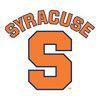
The Department of Film and Media Arts at Syracuse University (SU) is part of the College of Visual & Performing Arts (VPA). Within the Department are several paths to study animation. Options include a Computer Art and Animation BFA, a Computer Art MFA, and an Animation and Visual Effects minor.
The minor allows students to focus in Animation, Visual Effects, or both. Consisting of 21 credit hours, this option includes courses such as Animation Workshop I-II; Previz and Character Development for Animation; Advanced 3D Animation and Visual Effects; Drawing II: Representation to Conceptualization; Visual Effects Workshop I-II; Drawing for Illustration; and Film Scriptwriting.
Upon completion of the SU Animation and Visual Effects minor, students may pursue further study in the College of VPA or other SU colleges. Students are also prepared to pursue entry-level positions in the entertainment industry.
The Computer Art and Animation BFA at Syracuse University provides the opportunity to observe the production processes at studios around the world. Examples include Method Studios (Los Angeles, New York, Atlanta, Vancouver and Montreal, Canada, Melbourne, Australia, and Pune, India); and Filmworks/FX (Brooklyn, New York, Los Angeles, and Woodland Hills, California).
All BFA students also have the opportunity to participate in the VPA LA Semester. This immersive professional development program allows students to work as interns in Los Angeles, while taking courses taught by professionals working in the city’s entertainment industry. Course examples for this 121 credit hour program include History of Animation; Art and Craft of Animation; Intermediate 3D Animation; Visual Effects Workshop I and II; Topics in Computer Gaming; Film and Media Arts Advanced Studio; Previsualization and Character Development for Animation; and Advanced Animation.
The SU Computer Art and Animation program culminates with the Senior Project and Portfolio, completed across two courses.
Graduates of the SU Computer Art and Animation BFA program have been hired at places such as Pixar, Cartoon Network, Sony Pictures Imageworks, Filmworks/FX, and Tippett Studio.
The Computer Art MFA program at Syracuse University was founded in 1980 by Computer Artist Edward Zajec. Consisting of 60 credit hours completed over three years, the program allows students to focus in a specific area through studio electives (12 credits) and free electives (six credits). Areas may include Computer Animation, Visual Effects (VFX), Gaming, Software Art, Sonic Art, Multi-Channel Installation, Physical Computing, and Electronic Objects.
Graduate students in all areas have 24/7 access to computer art facilities; video post-production, audio production, and recording studios; dedicated Apple MacPro workstation; video camcorders and field audio recorders; and a range of physical computing gear.
The Computer Art MFA program at Syracuse University culminates with an oral examination and final project with presentation. Graduates are prepared for careers in all areas of entertainment. Program alumni can be found at major networks and studios such as Industrial Light and Magic (ILM), Pixar, Sony Pictures Imageworks, Cartoon Network, MPC Film, Blizzard Entertainment, Tippett Studio, and Filmworks/FX.
Founded in 1870, Syracuse University is an R1 research university that serves approximately 22,700 students from all 50 states and 120 countries. More than 200 majors, 100 minors, and 200 advanced degree programs are provided across 13 colleges and schools. In addition to campuses in Syracuse, Manhattan, Washington DC, and Los Angeles, Syracuse University operates overseas centers in France, Italy, London, Poland, Chile, and Spain. Syracuse University is accredited by the Middle States Commission on Higher Education (MSCHE).

Virginia Commonwealth University’s (VCU) School of the Arts (VCUArts) houses the Department of Kinetic Imaging (KI), which has programs for students who are interested in video, sound, and animation as they relate to filmmaking, experimental video, and art-making. Other KI Department highlights include lectures, workshops, and performances by visiting artists; access to state-of-the-are facilities, studios, and labs; and internship opportunities.
For students seeking a career in animation, the KI Department at VCU has a Kinetic Imaging BFA program that requires a minimum of 120 credit hours. At the graduate level, students can earn a Fine Arts MFA with a concentration in Kinetic Imaging. Both programs are multidisciplinary and explore areas such as animation, video, virtual reality, emerging art, and sound.
BFA students will complete courses such as Space Research; Animation I-IV; Survey of Art; Video I-III; Time Studio; Animation Practices; 3D Computer Animation I-II; Creative Code and Electronics; 3D Computer Art; Virtual Interactive Worlds; Sound Communication I-II; Concept and Development Studio; Media Arts Survey; Video Practices; and Critical Issue in Media. The program culminates with the Research and Production I and II courses. Completed across the fall and spring semesters, the courses consist of the critical analysis and development of a culminating project with emphasis on implementation, execution, and presentation.
The Kinetic Imaging BFA program at Virginia Commonwealth University takes four years to complete, full-time. Graduates are prepared to pursue titles such as 2D Animator, 3D Animator, Director, Sound Designer, Motion Graphics Artist, and UI/UX Designer.
The Fine Arts-Kinetic Imaging MFA at VCU is a 60 credit hour, studio-based program designed to support six-eight students. This flexible program explores animated arts, emerging media, coding, sound art, interactivity, installation, and mediated performance. Each semester, students will complete a graduate seminar and a graduate studio class consisting of vigorous studio production. Students will also can select an additional elective to help meet their individual studio and research goals.
Other KI MFA features include 24/7 access to personal studios and animation, video, and sound production spaces; opportunities to teach in the undergraduate KI program; and visiting artists that host talks and one-on-one studio visits with graduate students. The culminating experience for the KI MFA is the exhibition of the student’s best work at VCU’s Anderson Gallery.
The Virginia Commonwealth University Fine Arts/Kinetic Imaging MFA program can be completed in two years, full-time. Graduates are prepared for leadership roles across creative industries and in the technology sector, science and medicine, architecture, and education, among others.
Founded in 1838, Virginia Commonwealth University is a top 100 research university that serves approximately 28,410 students. The largest employer in Richmond, Virginia, VCU provides more than 200 academic programs across 15+ colleges, schools, and centers. Virginia Commonwealth University accredited by the Southern Association of Colleges and Schools Commission on Colleges (SACSCOC).

The Department of Art, Film, and Visual Studies (AFVS) at Harvard University is located in the Carpenter Center for the Visual Arts—the nation’s only Le Corbusier building. In addition to the Carpenter Center, AFVS courses are held in Sever Hall—a National Historic Landmark, and Linden Street Studios, which is utilized by faculty members, upper division students, and practicing artists.
The AFVS Department provides opportunities to concentrate in just about any area of visual arts and at all degree levels, including the AB (or BA). Examples include animation, drawing, filmmaking, visual studies, painting, and video art. Students in all concentrations have opportunities to work with faculty in studios and small seminars to reach their goals.
For students who would like to pursue animation, many courses are available to customize the program. Examples include Experimental Animation; Fundamentals of Animation; Intermediate Animation; Film & Visual Studies Workshop; The Art of Film; Immersive Experience as Art; A Video Toolbox; Filmmaking Workshop; Drawing as a Visual Language; Graduate Studio Workshop; and Working with Actors.
AFVS Studio Art and Animation/Film/Video/New Genres courses are practice-based, and the Film and Visual Studies courses are seminar and lecture based. Students in all Harvard AFVS programs have the opportunity to take courses outside of the department. Courses may explore Theater, Media, History of Art and Architecture, Dance, and Cultural Studies.
Graduates of the AFVS programs at Harvard University are prepared to pursue roles in all areas of animation and film production.
Founded in 1636, Harvard University is the oldest institution of higher education in the U.S. The school serves approximately 25,265 students enrolled in hundreds of programs across 13 degree-granting Schools and the Harvard Radcliffe Institute. Harvard University is accredited by the New England Commission of Higher Education (NECHE).

The School of Humanities, Arts, and Social Sciences (HASS) at Rensselaer Polytechnic Institute (RPI) houses the Department of Art, home to the Electronic Arts (EART) Program. EART students have access several paths to study animation. Options include the EART BS, PhD, and minor.
The EART BS has concentrations in Animation and Algorithmic Art; Sonic Arts; Video, Performance and Social Practice; Integrated Visual Art; and DIY (Do It Yourself). All options explore 3D Animation, Graphic Storytelling, Interactive Arts, and Digital Imaging. Animation and Algorithmic Art students will take courses such as 3D Animation; 2D Experimental Animation; Art and Code and Interactivity; Experimental Game Design; Advanced Digital 3D Projects; Art for Interactive Media; Creative Seminar I and II; 3D Digital Modeling; Life Drawing and Anatomy for Artists; Interactive Arts Programming; 3D Visual Effects; Topics in the Arts; Animation Production; and Digital Filmmaking.
The EART PhD program at Rensselaer Polytechnic Institute is one of the first programs of its kind. Consisting of 48 credit hours beyond the master’s degree, this interdisciplinary program requires successful completion of Electronic Arts Overview; Research Methods; the Arts Graduate Colloquium; and a Dissertation. Study plans allow students to choose the remaining courses from other RPI departments and programs. This includes Animation, Video, Science and Technology Performance, and Computer Music.
The EART PhD Dissertation—the culminating experience for the program—leads to the creation of a practice-based presentation in the form of a gallery show or performance.
The RPI EART minor is an immersive program that requires 16 credit hours of study. Students in this program will take a combination of history/theory and studio courses. Examples of history/theory courses include The Multimedia Century; World Music; and Histories of Western Music. Studio course options include Art for Interactive Media; Digital Filmmaking; Basic Drawing; Music and Sound; and Digital Imaging.
Graduates of the EART programs at Rensselaer Polytechnic Institute are prepared to pursue careers in fields such as animation, television and film, game design and development, advertising, and education. Program alumni have been hired at companies and studios such as DreamWorks Animation, Microsoft, Branch VFX, IBM, Facebook, 1st Playable, AMC Networks, FDM Group, Something Digital, F2 System, and The Creative Advantage.
Established in 1824, Rensselaer Polytechnic Institute is the nation’s first technological research university. Serving approximately 7,065 students, RPI provides more than 50 degree programs across five schools. Rensselaer Polytechnic Institute is accredited by the Middle States Association of Colleges and Schools (MSACS).

The College of Arts, Humanities, and Social Sciences (CAHSS) at University of Maryland Baltimore County (UMBC) houses the Department of Visual Arts. Within the Department are two paths to study animation: the BA and BFA in Visual Arts. Both options allow students to select a concentration in Animation.
The BA program requires completion of a 24 credit hour Visual Arts core and a 24-27 credit hour Animation concentration. The BFA Visual Arts core is 27 credits, with a 45 credit hour Animation concentration. Visual Arts course examples across programs include Introduction to Art and Media Studies; Drawing I/Beginning Drawing; Studies in Visual Culture (Prehistory through the 1750s); and Visual Concepts I-IV. The Visual Concepts courses cover Two-Dimensional Design Principles; Camera Vision; Three-Dimensional Form, Space and Interaction; and Time-Based Media.
Course examples for the Animation concentration include Real Time Animation; Motion Graphics and Compositing; Animation in the Physical World; Advanced 3D Animation; Writing for Media Arts; History of Animation; and Sound Design. Visual Arts will alco complete nine credits of electives, including courses such as Topics in Animation and Interactive Art; Advanced 3D Animation; Installation Art; and Team-Based Game Development.
In addition to a variety of course options, the Visual Arts program at UMBC provides the opportunity to complete an internal or external internship related to the students focus. Visual Arts student have interned at places such as Smithsonian, Baltimore Orioles, Stanley Black & Decker, Baltimore Office of Promotion of the Arts, Maryland Public Television, Image Factory DC, Mindgrub Technologies, Renegade Productions, Maryland Art Place, and Creative Alliance.
Students may also gain experience by enrolling in the elective course ART 496 – Imaging Research Center Internship (IRC). Students in this option will work on animation, graphics, and multimedia production in a professional work environment for real clients or research teams. Students will work in collaborative teams under the guidance of IRC directors.
In the final year of the Visual Arts BA and BFA programs, students will exhibit their best work at the Senior Exit Exhibition held at the Center for Art, Design and Visual Culture. Awards for Excellence are presented at the opening reception.
Graduates of the Visual Arts BA and BFA programs at University of Maryland Baltimore County are prepared to pursue roles in the entertainment industry, game design and development, advertising, web design, architecture, science and medicine, government, and education.
University of Maryland Baltimore County is part of the University System of Maryland. The school was established as a member in 1966. UMBC serves approximately 13,990 students enrolled in more than 200 degree, minor, and certificate programs across seven colleges and schools. The University of Maryland Baltimore County is accredited by the Middle States Commission on Higher Education (MSCHE).

The College of Arts, Humanities and Social Sciences at Pennsylvania Western University, Edinboro (PennWest Edinboro) houses a Department of Art that provides Visual Arts programs at all degree levels. Other Department features include visiting artist and speakers; dedicated studio spaces; multiple galleries with frequent exhibitions; courses taught by accomplished specialists across creative industries; and National Association of Schools of Art and Design (NASAD) accreditation.
Among the Art Department’s academic programs is a Media Arts BFA that explores Animation, Digital Filmmaking, and Photography. BFA students may specialize in Animation. The concentration explores hand-drawn and computer-generated animation, character design, storyboarding, visual development, and stop-motion. Course examples include Digital Drawing and Painting; 2D Design; Graphic Novel Art and Design; 3D Modeling and Rigging; Stop Motion and Experimental Animation; 2D Digital Animation; Digital Visual Effects; Storyboard and Character Design; 3D Dynamics and Simulations; Digital Audio-Moving Image, and Animation Pipeline.
Students will also complete Animation Portfolio Prep. During this immersive course (worth three to six credits) students will work with 3D computer modeling, animation, sound, advanced nodal surfacing, and special effects through lectures and practical demonstrations. Students will also work on a group computer animation project, a detailed modeling project, complete their digital portfolio, and give a software demonstration.
Other Animation program highlights include access to state-of-the-art facilities such as the 2D Cintiq Lab; opportunities to engage with professional animators, storyboard artists, and directors during special on-campus events; participation in regular exhibitions of peer and faculty work; travel to animation conferences and festivals in Los Angeles, New York, and Toronto; participation in the Animation Club; an internships with local, regional, and national production studios; and opportunities to tour major studios such as DreamWorks, Nickelodeon, Sony, Disney, Universal, Warner Bros, and Stoopid Buddy Stoodios.
The Media Arts BFA with an Animation concentration culminates with the Animation Production Capstone. Graduates are prepared to pursue careers across the entertainment, game design, and advertising industries, among others. Program alumni go on to become Animators, Character Designers, Visual Effects (VFX) Artists, Modelers, Storyboard Artists, and Directors.
Graduates of the PennWest Edinboro Animation program have been hired at major studios such as Disney, DreamWorks, Pixar, Blizzard Entertainment, and Nickelodeon.
Founded in 1857 as a private raining school for teachers, Pennsylvania Western University is western Pennsylvania’s second largest university. Composed of three sister institutions (Penn West Edinboro, PennWest Clarion, and PennWest California), the school serves a total of 11,305 students enrolled in hundreds of majors, minors, and graduate programs. PennWest Edinboro serves approximately 4,320 students enrolled in 100 majors and minors across 22 academic departments. Pennsylvania Western University is accredited by the Middle States Commission on Higher Education (MSCHE).
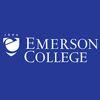
The School of the Arts at Emerson College (Emerson) is home to the Department of Visual & Media Arts (VMA). Within the department are two paths to study animation: the Media Arts Production (MAP) BA and BFA. As part of the VMA, students in both MAP programs have access to state-of-the-art equipment and facilities such as the Emerson College Emerging Media Lab (EML), where they can work in multiple areas of new media including 3D modeling and animation, artistic anatomy & 2D animation, rigging and animation, VR/AR, character design, and game design.
Other MAP benefits include the opportunity to gain hands-on experience through on-campus employment with Emerson College’s own in-house production company (Emerson Productions) or the Equipment Distribution Center (EDC); and opportunities for producing and screening work through film festivals and student organizations such as Women in Motion, Frames Per Second, Emerson Film Festival, and It’s All True – International Documentary Film Festival.
All MAP students have the opportunity to study and intern in the entertainment industry in Hollywood while spending a semester at Emerson Los Angeles (ELA). Established in 1986 and situated on Sunset Boulevard, ELA is a state-of-the-art, 120,000 square foot LEED-certified building where students can live and learn. The program provides access to more than 200 internship opportunities. Up to 215 Emerson students arrive at ELA each fall, with the potential to secure internships at places such as Disney, Lionsgate, Sony, Netflix, and Hulu.
The MAP BA program at Emerson College has two tracks: Production and Media Studies. The Production track is the ideal choice for animators. Students have access to courses such as Computer Animation; Drawing for Character Design; Writing the Short Subject; Film Production; Writing the Feature Film; Game Design; Producing; Film Production; Interactive Media; and Studio TV Production. With a required 16 credit hours of Visual and Media Arts electives, BA students have many opportunities to enhance the degree.
The program culminates with the BA Capstone Project. This one-semester course allows students to create a work in any area of the VMA program.
MAP BFA students will take all of the requirements listed for the BA program, along with an additional 16 credits of advanced media production courses, and a thesis project to be completed in the last semester of the program at the Boston campus.
Graduates of the VMA Department at Emerson College have directed, written, or produced major productions such as Ant-Man, Fantastic Four, Fargo, Everything Everywhere All At Once, and Swiss Army Man. Program alumni have also been hired at major studios such as Digital Domain, Searchlight Pictures, Worldwide Pants, Bunim Murray Productions, and MGM Studios.
Emerson College was established in 1880. The school serves approximately 4,930 students enrolled in more than 40 degree programs. In addition to the main campus in Boston, and ELA, Emerson has an overseas location in the Netherlands. Emerson College is accredited by the New England Commission of Higher Education (NECHE).

The Faculty of Arts and Sciences at Rutgers University Camden (Rutgers-Camden) is the school’s largest academic unit. With three schools and 16 departments, Arts and Sciences provides more than 30 undergraduate majors, and over 15 graduate programs. The Department of Visual, Media, and Performing Arts here provides two paths to study animation—the Art BA and the new Visual Art BFA. Both programs allow students to specialize in Animation.
Digital Arts and Animation minors are available to students in the Arts. Both options require 18 credit hours of study. Common courses across programs include Computer Animation; Storyboard and Character Design; Classical Animation; and Drawing.
The BA, BFA, and minor programs provide access to the electronic arts studios at Rutgers-Camden, which house two newly renovated graphic design studios, two animation labs, and a post-production lab. These state-of-the art facilities are outfitted with networked computers, post-production units, 2D/3D and editing software, and more. Students also have access to separate studios for painting, drawing, sculpture, and ceramics; a photography lab; and a digital photography studio.
The Art BA consists of a 27 credit hour core. The Animation concentration for this program is 21 credit hours. The BFA has a 30 credit core, with 33 credit hours required for the Animation concentration. Examples of common Animation courses include Computer Animation I-II; Animation Storyboard; Character Rigging; and Character Animation.
BA students will also take Classical Animation, with access to electives such as 3D Modeling and Printing; Video Game Design (in collaboration with the Digital Studies Center); and Independent Study. BFA students will take other courses such as 3D Interaction Design in Virtual Reality; Digital Effects; and 2D Character Design. BA and BFA students are required to complete Animation Production and Animation Capstone I and II to graduate.
Graduates of the Art BA and Visual Art BFA programs at Rutgers University Camden are prepared to pursue leadership roles (and others) in industries such as entertainment, game design, and advertising. Rutgers-Camden alumni have worked in the 3D animation industry as Art Directors and Technical Directors for studios such as Walt Disney, Digital Domain, Ubisoft, Warner Bros., and Psyop.
Animation graduates have participated in film productions and games such as Frozen, Ice Age, Sesame Street 3D, Walking with Dinosaurs 3D, Happy Feet, and Assassin’s Creed Unity. Animation alumni have also been hired for salaried positions at places such as Disney, Warner Bros., Digital Domain, Psyop, Ubisoft, and BBC Earth.
Rutgers University Camden is part of Rutgers, The State University of New Jersey (Rutgers). Founded in 1766, Rutgers is the 8th oldest university in the U.S. and New Jersey’s land-grant university. The school has locations in all 21 New Jersey counties.
Rutgers-Camden was founded in 1926 as South Jersey Law School and the College of South Jersey, which joined Rutgers in 1926. Serving approximately 6,075 students today, Rutgers University Camden provides nearly 70 degree programs across four colleges and schools. The school is accredited by the Middle States Commission on Higher Education (MSCHE).

New York Institute of Technology (NYIT or New York Tech) was founded in 1955 by Alexander Schure. A PhD, creative, and entrepreneur, Schure went on to launch the schools Computer Graphics Laboratory in 1974. This innovative facility is responsible for producing one of the world’s first computer animated films—Tubby the Tuba (1975). The production was directed by Schure and Pixar co-founders Alvy Ray Smith and Ed Catmull.
Today, NYIT houses six colleges and schools, including the School of Architecture & Design—home to the Department of Digital Art & Design. Within the department are two paths to study animation: the Digital Arts BFA and the Digital Art & Design MFA. The graduate program has a Fine Arts & Technology concentration.
As part of NYIT, all School of Architecture & Design students benefit from dynamic projects; access to internship opportunities at places such as Google, HBO, Live Nation, NBCUniversal, and MTV; and access to a state-of-the-art art media lab equipped with 2D, 3D and graphics software applications, gaming technologies, motion capture, 3D printing and emerging technologies.
Both MFA and BFA students also have opportunities to participate seminars, workshops, and summer abroad experiences. In addition, the Department of Digital Art & Design provides opportunities for students to show their work at the annual New York Institute of Technology Film and Animation Festival.
The NYIT Digital Arts BFA requires 120 credit hours of study and it can be completed at either the New York or Long Island campus. The program explores computer animation, digital arts production, and related areas. Course examples include Communication for Art and Design; Digital Compositing; Computer Graphics I and II; Motion Graphics; Form and Space; Drawing I and II; and Art History.
For elective requirements, students may choose from courses that explore a range of topics. Elective examples include 2D Animation; Illustration; Advanced 3D Modeling and Animation; Motion Capture; Concept and Visual Storytelling; Game Design I and II; Traditional to Digital Media; and Special Topics. Digital Arts BFA students will complete two thesis courses and a portfolio course to graduate.
Graduates of the NYIT Digital Arts BFA are prepared to pursue roles such as Animator, Storyboard Artist, Video Game Designer, Multimedia Producer, Digital Artist, Motion Capture Artist, 3D Modeler, and Motion Graphics Designer.
The 60 credit hour Digital Art & Design MFA at NYIT emphasizes classroom projects using 3D modeling software; motion capture; and experiential art via virtual and augment reality (VR/AR). Course examples for this NYC-based program include History of Art and Technology; Drawing; Aesthetics and Theory; Critical Thinking and Writing About the Arts; and Business of Creative Industries.
Students can develop a focus area through the required 21 credit hours of electives. Elective examples include Visual Effects; Stop-Motion Studio; Experimental Media; UX/UI Design; and Computer Programming.
The Digital Art & Design MFA at New York Institute of Technology culminates with Thesis Production I and II, worth eight credit hours, and the Thesis Paper and Exhibition course, worth two credits.
Graduates are prepared to pursue positions such as Animator, Production Artist, Digital Artist, Multimedia Designer, Motion Capture Artist, and Arts Educator.
New York Institute of Technology serves approximately 8,000 students from 40 states and more than 70 countries. The school provides more than 90 degree programs across campuses in NYC and Long Island; Jonesboro, Arkansas; and Vancouver, Canada. New York Institute of Technology is accredited by the Commission on Higher Education of the Middle States Association of Colleges and Schools.

Dartmouth College houses the Black Family Visual Arts Center, which is home to the Animation Studio. The 105,000 square foot building also houses Dartmouth’s Studio Art and Film & Media Studies Departments, as well as printmaking, architecture, painting, drawing, photography, and sculpture studios. A 200+ seat auditorium is part of the structures and well as spaces that host workshops, films, public talks, and special events.
Within the Film & Media Studies (F&MS) Department are two options for students interested in studying animation including a BA and a minor. Both programs provide access to a variety of animation and related courses, making it possible to focus in animation. Course examples include Animation: Principles and Practice; History of Animation; Storytelling in the Digital Age; Advanced Animation; Special Effects in Film History; Krieger's Virtual Girlfriend: Japanese Anime and the idea of the Post-human; Video Art; Introduction to Digital Arts and Culture; Game Design Studio; Introduction to Film: From Script to Screen; Video Games & the Meaning of Life; Cinema and the Graphic Novel; Video Mashups; and Writing for the Screen I and II.
The F&MS BA at Dartmouth culminates with the Honors Project, completed across two courses. Final works can be a screenplay, film production, or thesis.
The Computer Science Department at Dartmouth has two additional program options for animators seeking a strong foundation in computer science and solid skills in animation. Options include the Computer Science MS (CS MS) with a Digital Arts (DA) concentration and the DA minor. Students in both programs have access to Dartmouth’s production labs and other facilities, as well as the Digital Applied Learning and Innovation (DALI) Lab. Students in the lab will have opportunities to work with augmented and virtual reality (AR/VR), digital installations, web design, and mobile applications.
The CS/DA program is divided into three areas: Technical, Digital Arts, and Research/Thesis. All courses for the program are hands on and project-based, with topics that explore areas such as computer modeling and animation, VR/AR, digital music, HCI, computer graphics, UI/UX design, VR/AR, data visualization, computational fabrication, 3D printing, and computational photography.
Students in the DA minor may take courses such as Intro to 3D Animation; 3D Modeling; AR/VR Design and Development; Foundations in Digital Design; and Intro to UI/UX Design. The minor provides the option to complete the Projects in Digital Arts (short animation, a game, or VR/AR experience) course or Advanced Projects in Digital Arts (independent study).
Across all Dartmouth degree programs, students may complete an internship, enroll in one of many study abroad experiences, and/or participate in other department-specific experiential learning programs. Dartmouth students have opportunities to intern at places such as Illumination Entertainment, Activision Blizzard, E! Entertainment, Slope, Brighter.com, and Happy Returns.
Graduates of the Film & Media and CS/DA programs at Dartmouth College are prepared to pursue careers in areas such as animation, film, television, advertising, game design, VR/AR, multimedia, UI/UX, computer graphics, HCI, and art education. Program alumni have been hired at places such as Pixar, Microsoft, and Google.
Dartmouth College was established in 1769, making it one oldest colleges in the U.S. The school serves approximately 6,745 students enrolled in more than 90 programs across more than 60 departments. Dartmouth College is accredited by the New England Commission of Higher Education (NECHE).

The School of Visual Arts (SOVA) Virginia Polytechnic Institute and State University (Virginia Tech) is part of the College of Architecture and Urban Studies. SOVA has two paths to study animation. At the undergraduate level, students can earn a Creative Technologies (CT) BFA. Graduate students can earn a CT MFA.
The SOVA CT BFA explores theories, production methods, and digital media topics that prepare students for a various digital pipelines and production processes. Students in this program will develop professional skills in animation, video art, contemporary fine arts, 3D modeling, gaming, and virtual reality. Course examples include Topics in Computer Animation (Character Animation, Character Modeling, Video Game Design, and Processing); 3D Computer Animation; Topics in New Media Art (2D Motion Graphics, Digital Illustration, and Digital Video); Computer Animation Studio; and Topics in Digital Art + Design (Multimedia Studio Max/MSP). BFA students will complete a final project and portfolio to graduate.
The CT MFA at Virginia Tech is a cross-disciplinary, terminal degree that explores digital and new media technologies. Potential research subjects for the program include animation, 3D modeling, video art, interactive design, games, installation, virtual environments, visualization, project mapping, coding, simulations, and emerging media. MFA students will complete a minimum of 60 graduate-level credit hours and present an MFA Thesis Project to graduate.
Students in both the BFA and MFA CT programs may participate in the SOVA Study Abroad Program (three weeks in Europe), visiting artist workshops, exhibitions, and the Virginia Tech Internship Program.
Graduates of the Virginia Tech Creative Technology program go on to establish successful careers in the animation, film, and visual effects industries; motion graphics; game art, design, and development; virtual reality (AR/VR); UI/UX; production; and education.
Virginia Tech alumni have been hired at Walt Disney, Google, Epic Games, Apple, Ogilvy, The Pokemon Company International, Amazon, Fjord, Sinclair Broadcast Group, Sprout Studios, Apex Systems, DXA Studio, Lockheed Martin, and Atomic Productions.
Virginia Polytechnic Institute and State University opened on October 1, 1872 as Virginia Agricultural and Mechanical College. The school serves more than 38,000 students enrolled in approximately 280 undergraduate and graduate programs across nine colleges and schools. Virginia Tech is accredited by the Southern Association of Colleges and Schools Commission on Colleges (SACSCOC).

The J. Robert and Barbara A. Hillier College of Architecture and Design (HCAD) at New Jersey Institute of Technology (NJIT) is home to the School of Art + Design. Within the school are several paths to study animation at both the undergraduate and graduate levels.
For undergraduates the school has a Digital Design BA with two tracks: Entertainment and Interactive Media. At the graduate level, students can earn a Digital Design MFA (MFADD) and Digital Design MS (MSDD). Students can also earn an Animation Essentials Certificate—delivered entirely online.
Consisting of 12 credit hours, the stand-alone certificate program requires the following two courses: Visual Storytelling and Storyboarding and Acting for Animators. For the remaining courses, students can select two from the following three: Character and Facial Modeling for Animators; Environment Design; and Digital Audio. Upon completion of the certificate program, students are prepared to pursue positions in the Digital Animation industry.
The Digital Design BA (both tracks) begins with the foundation year, which provides 24/7 access to the Animation Lab; Cintiq-equipped Art Teaching Lab; Physical Computing Lab (used for robotic and sensor-based product design); and Digital and traditional fabrication facilities. After the foundation year, students will select a track. The curriculum for both tracks consists of a three-year studio sequence and opportunities for students to take courses such as Video and Animation; History of Games; 2D and 3D Character Design and Modeling; SFX/VFX in Movies; Internet Marketing; Game Level Design; Digital Audio; and Management.
The Digital Design MFA and Digital Design MS programs at New Jersey Institute of Technology are low-residency programs that require 60-75 credits, and 30-45 credits, respectively. The MFA is a terminal degree. Both programs provide opportunities to focus in animation through elective coursework and/or the Animation Essentials certificate. Course examples across programs include Animation; Game Design and Interactivity; UI/UX; Visual Storytelling; Digital Audio; Acting for Animators; Environment Design; Character Modeling; History of Games; and Customer Discovery.
Across all NJIT Digital Design programs, students have opportunities to display their work through curated exhibits and competitions, and the annual ACM/SIGGRAPH Conference. Students can also participate in the internship program.
Graduates of the Digital Design programs at New Jersey Institute of Technology are prepared to pursue a variety of roles in Animation, Game Art and Design, Special Effects, Digital Media Design, Visualization, Digital Special Effects, Film Production, Technical Illustration, Scientific Visualization, Advertising, Web Design, and Interactive Art Installation.
Program alumni have interned with or been hired at places such as NBCUniversal, ETS, High 5 Games, NTropic, Method Studios, SWDTech Games, Tripwire Interactive, SUSPECT vfx+design, 1st Avenue Machine, and Grafx Co.
Established in 1881 as Newark Technical School, New Jersey Institute of Technology is a public, polytechnic university that serves approximately 12,300 students. More than 125 degree programs are available across six specialized schools. New Jersey Institute of Technology is accredited by the Middle States Association of Colleges and Schools (MSA). Across NJIT programs, accreditations include: Accreditation Board for Engineering and Technology (ABET); Association to Advance Collegiate Schools of Business (AACSB); National Architectural Accrediting Board (NAAB); and National Association of Schools of Art and Design (NASAD).